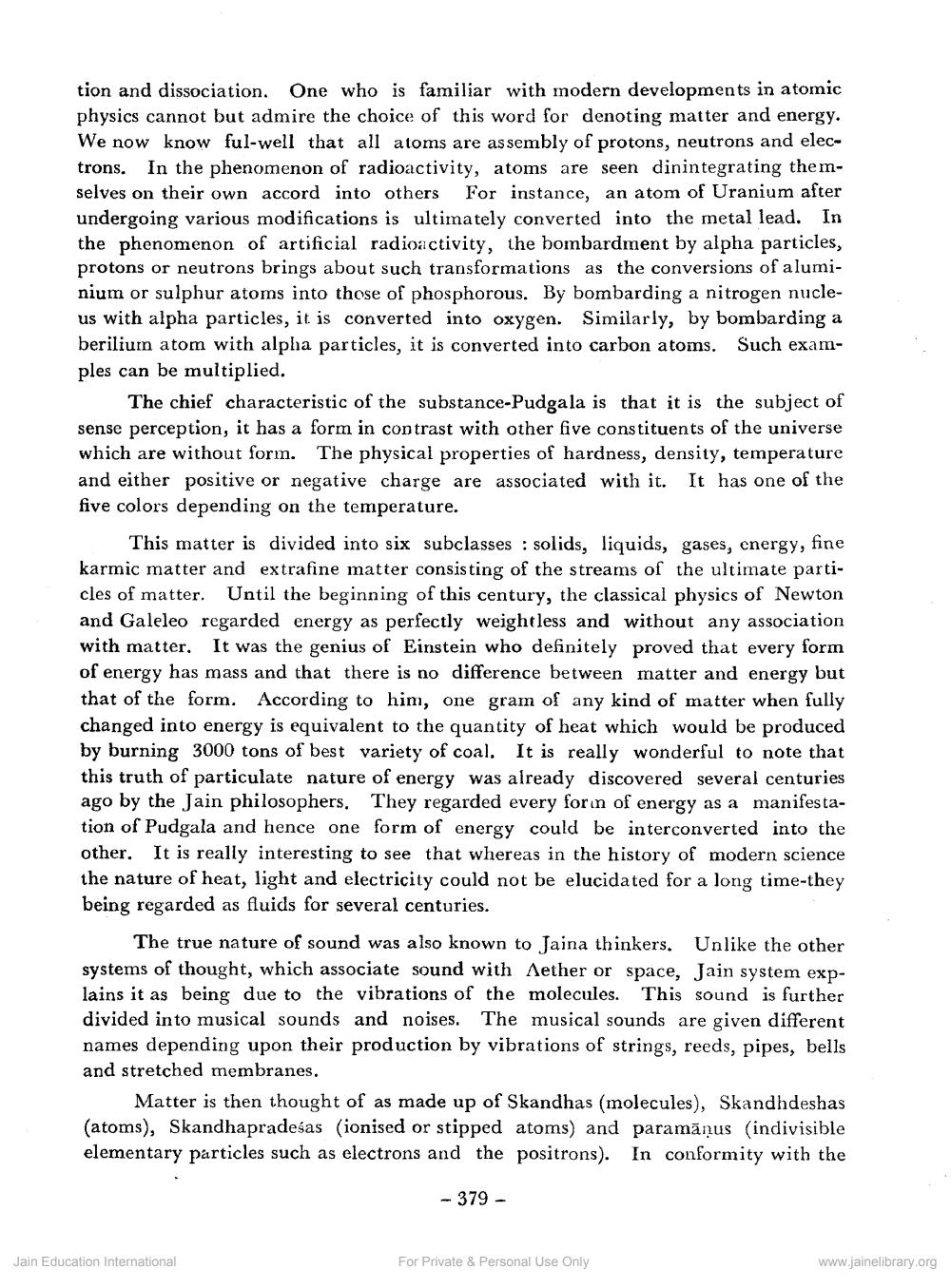Book Title: Space Time and The Universe Author(s): G R Jain Publisher: Z_Kailashchandra_Shastri_Abhinandan_Granth_012048.pdf View full book textPage 5
________________ tion and dissociation. One who is familiar with modern developments in atomic physics cannot but admire the choice of this word for denoting matter and energy. We now know ful-well that all atoms are assembly of protons, neutrons and electrons. In the phenomenon of radioactivity, atoms are seen dinintegrating themselves on their own accord into others For instance, an atom of Uranium after undergoing various modifications is ultimately converted into the metal lead. In the phenomenon of artificial radioactivity, the bombardment by alpha particles, protons or neutrons brings about such transformations as the conversions of aluminium or sulphur atoms into those of phosphorous. By bombarding a nitrogen nucleus with alpha particles, it is converted into oxygen. Similarly, by bombarding a berilium atom with alpha particles, it is converted into carbon atoms. Such examples can be multiplied. The chief characteristic of the substance-Pudgala is that it is the subject of sense perception, it has a form in contrast with other five constituents of the universe which are without form. The physical properties of hardness, density, temperature and either positive or negative charge are associated with it. It has one of the five colors depending on the temperature. This matter is divided into six subclasses : solids, liquids, gases, energy, fine karmic matter and extrafine matter consisting of the streams of the ultimate particles of matter. Until the beginning of this century, the classical physics of Newton and Galeleo regarded energy as perfectly weightless and without any association with matter. It was the genius of Einstein who definitely proved that every form of energy has mass and that there is no difference between matter and energy but that of the form. According to him, one gram of any kind of matter when fully changed into energy is equivalent to the quantity of heat which would be produced by burning 3000 tons of best variety of coal. It is really wonderful to note that this truth of particulate nature of energy was already discovered several centuries ago by the Jain philosophers. They regarded every forın of energy as a manifestation of Pudgala and hence one form of energy could be interconverted into the other. It is really interesting to see that whereas in the history of modern science the nature of heat, light and electricity could not be elucidated for a long time-they being regarded as fluids for several centuries. The true nature of sound was also known to Jaina thinkers. Unlike the other systems of thought, which associate sound with Aether or space, Jain system explains it as being due to the vibrations of the molecules. This sound is further divided into musical sounds and noises. The musical sounds are given different names depending upon their production by vibrations of strings, reeds, pipes, bells and stretched membranes. Matter is then thought of as made up of Skandhas (molecules), Skandhdeshas (atoms), Skandhapradeśas (ionised or stipped atoms) and paramānus (indivisible elementary particles such as electrons and the positrons). In conformity with the - 379 - Jain Education International For Private & Personal Use Only www.jainelibrary.orgPage Navigation
1 ... 3 4 5 6 7 8 9 10 11 12 13
